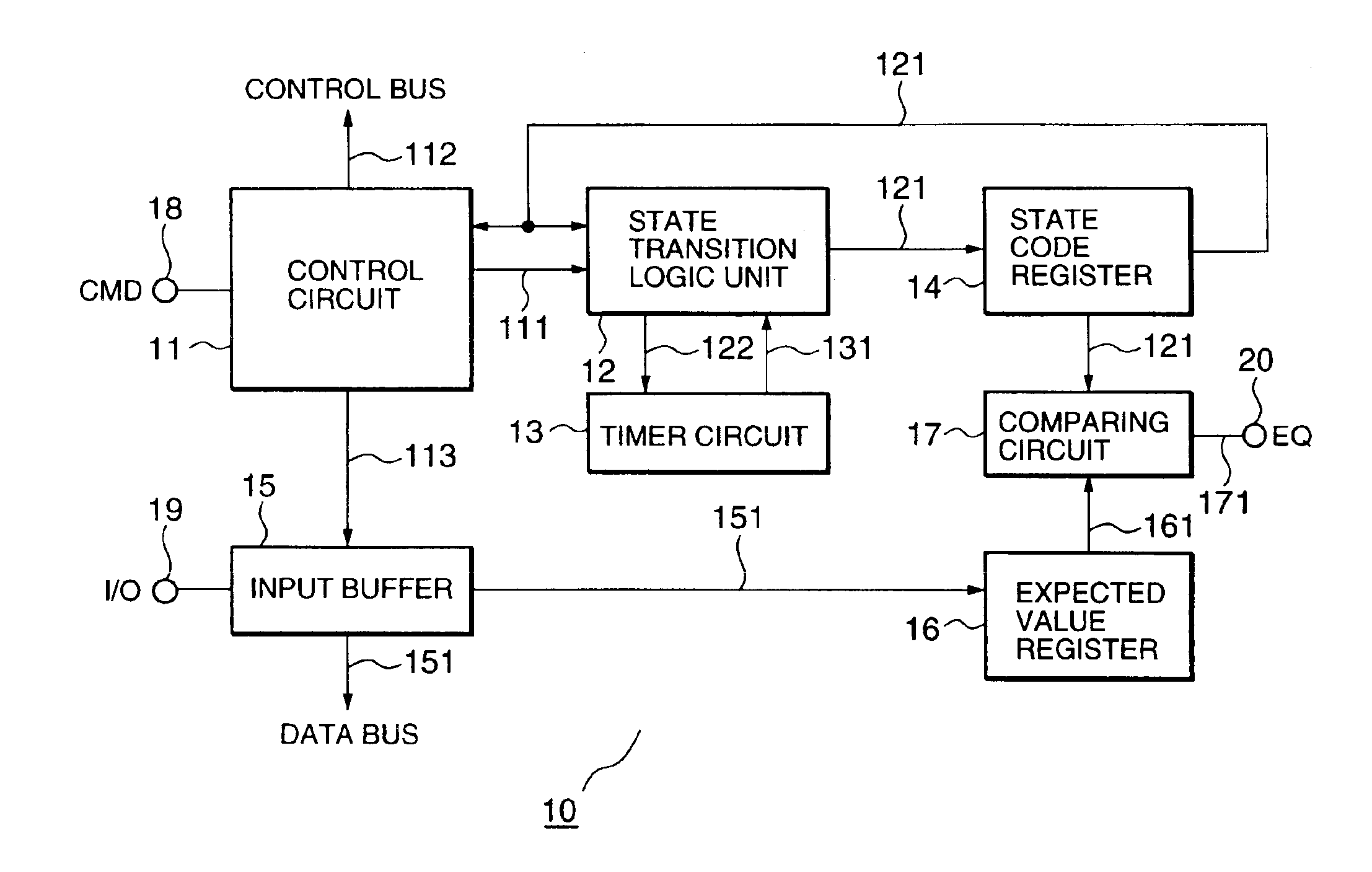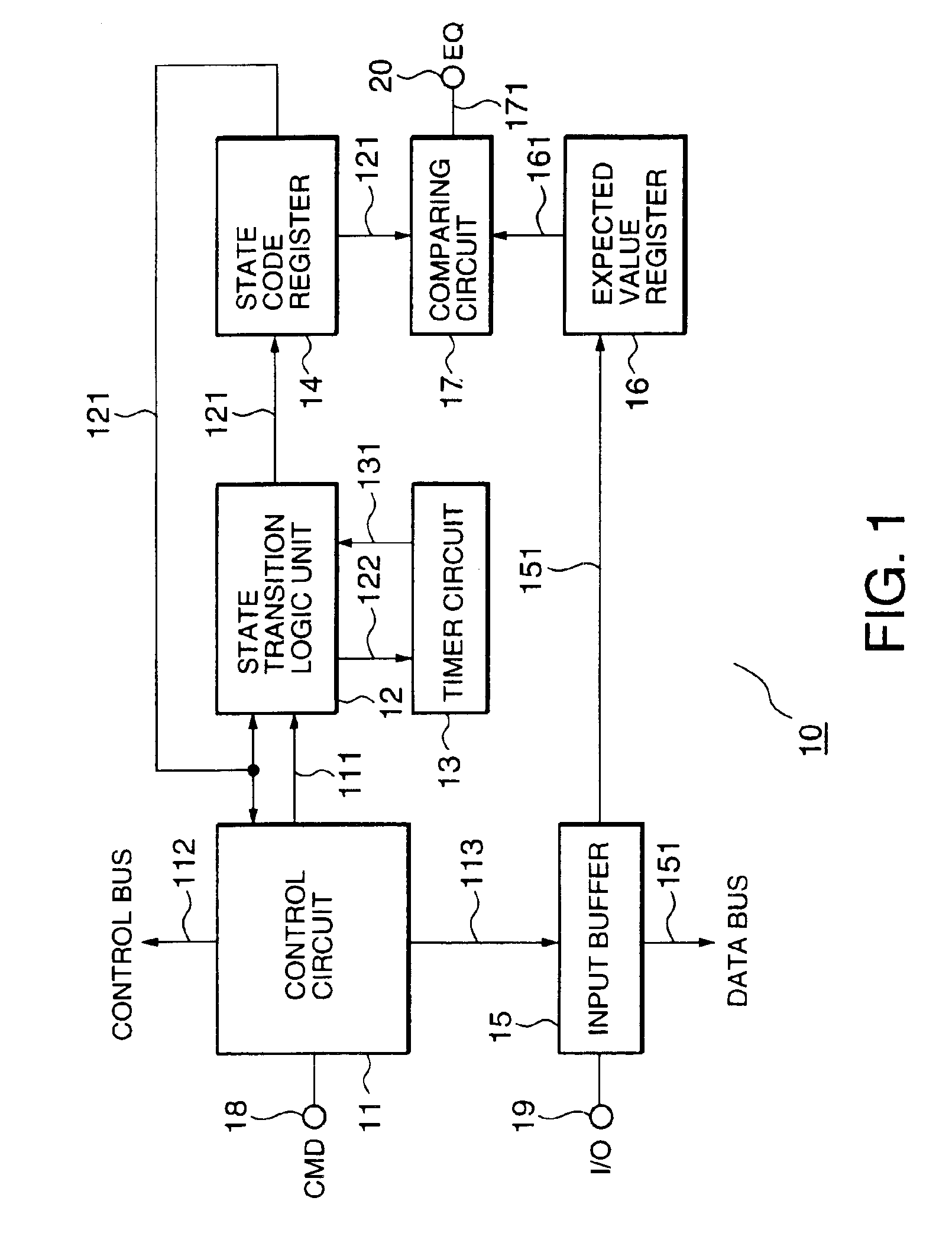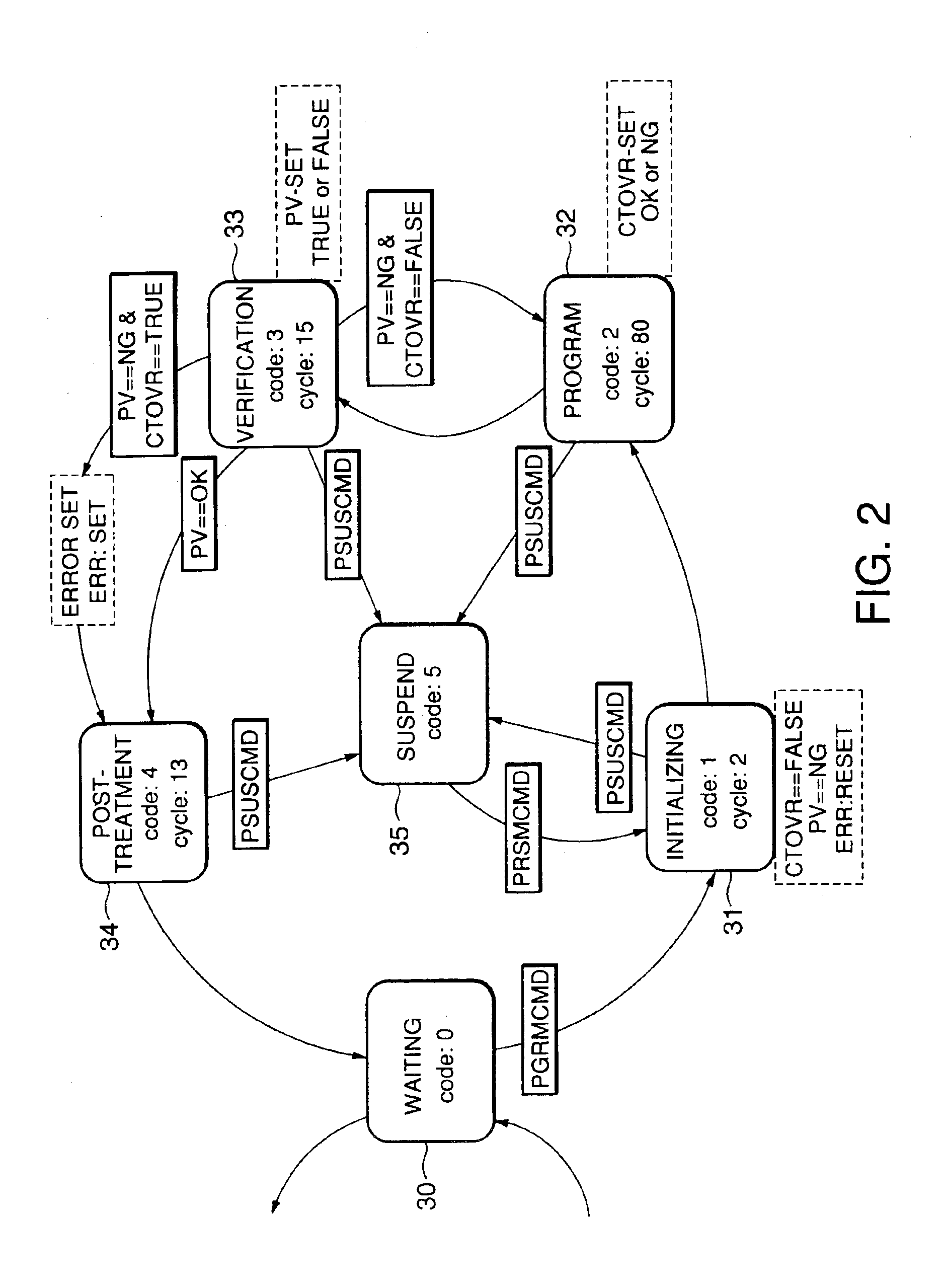Semiconductor device and a method for checking state transition thereof
a semiconductor device and state transition technology, applied in the direction of electric controllers, pulse techniques, instruments, etc., can solve the problems of wasting a lot of time in evaluating entire combinations of commands at all timing, and it is difficult to generate trigger signals for this observation, so as to facilitate the evaluation and analysis of state transition, the effect of efficiently evaluating and analyzing state transitions
- Summary
- Abstract
- Description
- Claims
- Application Information
AI Technical Summary
Benefits of technology
Problems solved by technology
Method used
Image
Examples
first embodiment
[0056]As illustrated in FIG. 3, the semiconductor device of this embodiment consistent with the present invention includes a control circuit 51 configured to generate a command or a control signal 211 by receiving an external signal through an input terminal 58, a state transition logic unit 52 configured to determine a next internal state based on a present internal state and the inputted command 211, a timer circuit 53 configured to count a residence period at the present internal state, a state code register 54 configured to hold a present internal state, an input buffer 55 configured to hold data inputted externally, an expected value register 56 configured to hold an internal state to be detected, and a comparing circuit 57 configured to compare between a present internal state 221 and an expected value 261 and to output an equal state signal 271. For simplifying the explanation, the necessary terms, such as internal state, state code, expected value, are defined as the same as...
second embodiment
[0067]According to this second embodiment of the invention, it becomes possible to stop the state transition at a desired internal state by inputting an expected value corresponded to an arbitrary internal state. Thus, it can easily confirm a signal level at a desired internal state by a suitable method, such as an internal pin fitting. Especially, this embodiment is very useful for efficiently evaluating and analyzing a consecutive operation having a long execution time, such as a semiconductor device including nonvolatile memory cells. Consequently, this embodiment consistent with the present invention can largely improve efficiency for future development.
[0068]In this embodiment, it has been explained that the state transition from a stopped internal state as a result of a comparison to an expected value is executed by a PSUSCMD command. The present invention is not limited to this feature. For example, it is also possible to transit from each of the internal states to a waiting ...
PUM
 Login to View More
Login to View More Abstract
Description
Claims
Application Information
 Login to View More
Login to View More - R&D
- Intellectual Property
- Life Sciences
- Materials
- Tech Scout
- Unparalleled Data Quality
- Higher Quality Content
- 60% Fewer Hallucinations
Browse by: Latest US Patents, China's latest patents, Technical Efficacy Thesaurus, Application Domain, Technology Topic, Popular Technical Reports.
© 2025 PatSnap. All rights reserved.Legal|Privacy policy|Modern Slavery Act Transparency Statement|Sitemap|About US| Contact US: help@patsnap.com



